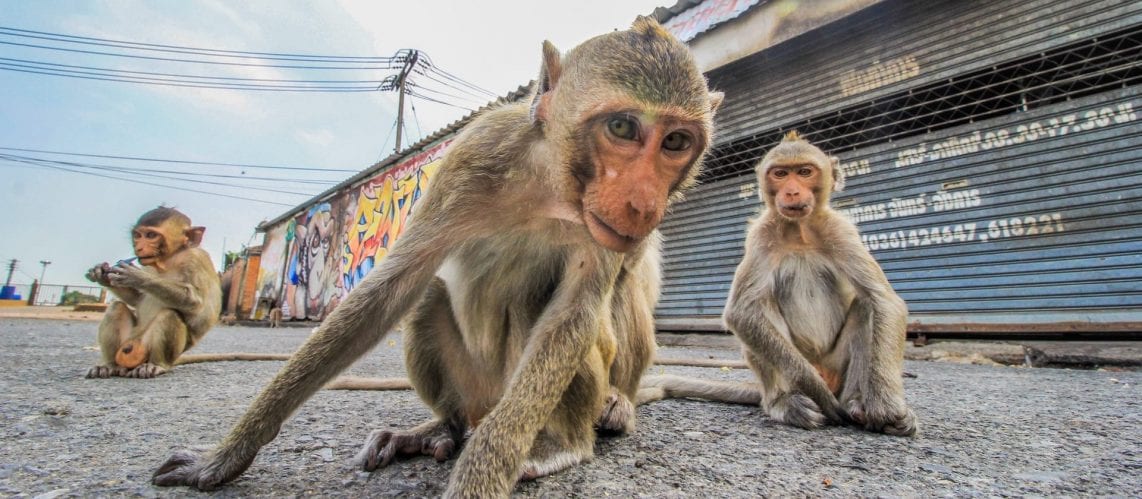Written by: Achu Balasubramanian, Saniya Syeda, Mackenzie Warren, Claire Lungwitz
Rader, Karen Ann. “Why Mice?” Making Mice: Standardizing Animals for American Biomedical Research, 1900-1955, Princeton University Press, 2004, pp. 1–24.
Compared to: DeGrazia, David. Animal Rights: a Very Short Introduction. Oxford University Press, 2002.
The author of Making Mice, Dr. Karen Rader, is a historian who studies the intellectual, cultural, and social history of the modern life sciences in the United States. She holds degrees in Biology (B.S.) from Loyola College and History & Philosophy of Science (M.A. and Ph.D.) from Indiana University. Rader has been awarded grants from the Mellon Foundation and the National Science Foundation for her research on animals and society.
Making Mice, published in 2004 by the Princeton University Press, was Rader’s first book. It blends scientific biography, institutional history, and cultural history to show how genetically standardized mice came to play a central role in contemporary American biomedical research. With endorsements from professors at Princeton University and the University of Pennsylvania, Making Mice was selected as a CHOICE Outstanding Academic Book.
This annotated bibliography will analyze the Introduction of this book, which summarizes the fire at the Jackson Laboratory and examines how and why mice came to be so popular in biomedical research.
The chapter begins in 1947, when a fire destroyed the Jackson Laboratory in Bar Harbor, Maine. This laboratory housed ninety thousand mice used for cancer and genetics research. Immediately, numerous national institutions raised money for the laboratory to rebuild and continue its research. Rader poses the question, “Why was there more national financial support available for quickly rebuilding JAX’s mouse houses than for rebuilding Bar Harbor’s own natural resources?” (Rader 6) To answer this, she cites the fact that genetically standardized mice “are enough like us to make laboratory results obtained from them generalizable to humans, but not so much like us that we ethically prohibit their being the subject of experiments” (Rader 22). She emphasizes how important genetically standardized mice have become to cancer, genetic, and stem cell research as a result of this.
While Rader uses substantial evidence to discuss mouse experimentation, she does not take a specific stance on the controversy of the matter. In fact, she states: “My interest in documenting how standardized laboratory animals is both academic and political, but not condemnatory” (Rader 23). The closest she comes to establishing a position is when she acknowledges that “laboratory mice occupy a prominent place within recent biomedical success stories” (Rader 22-23). If this quote were to be found in a reading that advocated for continued animal research, one could interpret it as supporting evidence for this argument. However, since Rader’s analysis is purely scientific and historical, the rest of the reading assumes a neutral attitude towards animal research.
Contrasting this work to the ‘Animal Research’ chapter of DeGrazia’s Animal Rights: A Very Short Introduction, it is clear that these works focus on two entirely different subsets of animal research. In Making Mice, Rader makes no effort to establish a decisive position on whether continued research on mice should be condemned or encouraged. DeGrazia is far more emphatic in his condemnation of animal research, stating that “animals, after all, are not mere tools.” (DeGrazia 116) Rader chooses to focus on the historic and scientific perspective of research on mice, while DeGrazia analyzes animal research as a whole from an ethical perspective. Because they focus on two different groups–solely mice versus the entirety of animals used in research–these two works are not complementary. However, they do present perspectives that appeal to readers in different ways. Since Making Mice appeals to the reader’s logos (logical side) while Animal Rights appeals to the reader’s pathos (emotional side), these works can help readers gain a broader understanding of animal research.
Rader’s work shines light on the long history of laboratory mice and how they have contributed to advancing scientific research. Examining this history also brings up new questions for the future. One of the questions brought up is the possibility of “envisioning new ways to make biomedical science a livable and workable space for all animals” (Rader 24). Laboratory mice have been the driving force behind most biotechnological research for decades; however, the controversy surrounding the matter has pushed scientists to come up with new research methods. One such solution could be computer-based simulations that mimic human biology, which is now possible due to how far such technology has advanced. An alternative solution involves growing cell cultures to model living structures, another field of science which has progressed greatly in recent years.
